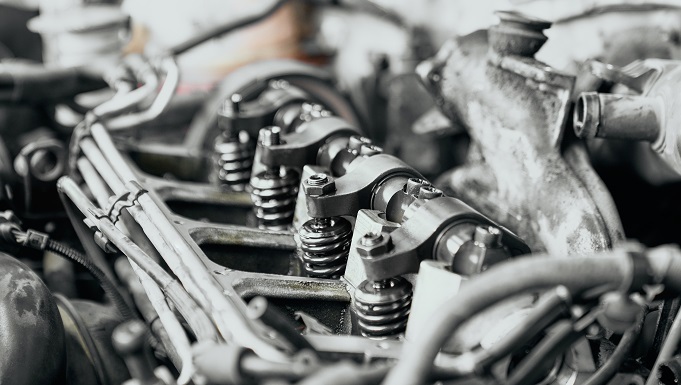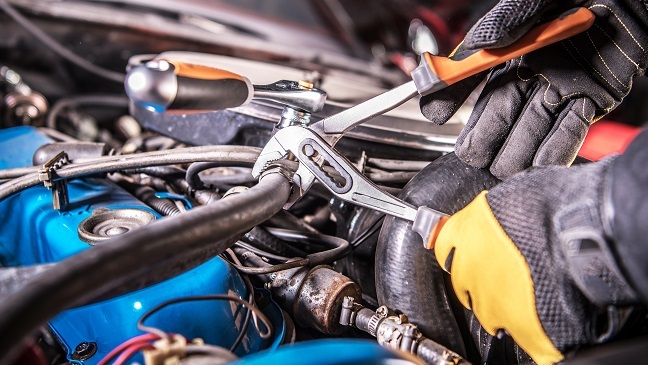
 Data Structure
Data Structure Networking
Networking RDBMS
RDBMS Operating System
Operating System Java
Java MS Excel
MS Excel iOS
iOS HTML
HTML CSS
CSS Android
Android Python
Python C Programming
C Programming C++
C++ C#
C# MongoDB
MongoDB MySQL
MySQL Javascript
Javascript PHP
PHP
- Selected Reading
- UPSC IAS Exams Notes
- Developer's Best Practices
- Questions and Answers
- Effective Resume Writing
- HR Interview Questions
- Computer Glossary
- Who is Who
What is the full form of DDIS?
Introduction
Direct Diesel Injection System (DDIS) is a fuel injection system and it comprises a high-pressure pump to supply fuel to the injectors located in the cylinder head. These injectors are electronically controlled and the fuel can be directly sprayed into the combustion chamber at high pressure between 2000 and 2500 bar.

DDIS is known to be a very advanced and efficient fuel injection system in comparison to the older indirect injection systems. Direct injection usually provides better fuel efficiency, power output and lower emissions. This technology is extensively used in modern diesel engines like trucks, cars and other heavy machinery.
Definition of DDIS
DDIS, or generally known as the Direct Diesel Injection System is a kind of fuel injection that is extensively used in diesel engines. In this system, fuel is directly injected into the combustion chamber of the engine cylinder under high pressure rather than injected into a pre-chamber as in indirect injection systems. This Direct Diesel Injection System comprises a high-pressure pump that supplies fuel to the electronically controlled injectors that are located in the cylinder head. This helps in much better fuel efficiency, power output and lower emissions.
Working of DDIS
DDIS, generally known as Direct Diesel Injection System, is electrically controlled. Since it is one of the most used injections systems these days, one cannot avoid that it has a working procedure which can be explained. Those are mentioned below
Fuel in the DDIS is first pulled through the fuel tank by a high-pressure fuel pump and then delivered to the fuel rail.
The fuel rail holds the high-pressure fuel and delivers it to the fuel injectors.
The fuel injectors are electronically handled and acquire signals from the engine control unit (ECU) to select the accurate timing and amount of fuel to be injected.
When the fuel injector acquires a signal, it unlocks an electronically regulated valve to remove a precise quantity of fuel at high pressure, generally between 2000 and 2500 bar.
The fuel is insinuated instantly into the combustion chamber of the engine cylinder, where it combines with air and kindles to deliver power.
The timing and quantity of fuel injected are precisely controlled by the ECU, which utilises input from diverse detectors to optimise combustion efficiency and lower emissions. The process of fuel injection and combustion repeats per engine cylinder as the engine operates.
Advantages of DDIS
Direct Diesel Injection System or DDIS offers various benefits in comparison to the older indirect injection systems. The benefits are as follows

Increased power output It provides more power and torque than the indirect injection systems. In the case of direct injection systems, the fuel is directly injected into the combustion chamber under high pressure which produces more combustion as well as power.
Better fuel efficiency DDIS delivers improved fuel efficiency. Due to its precise fuel delivery in the combustion chamber, it results in better combustion and reduced fuel consumption.
Lower emissions It delivers lower emissions and more complete combustion.
Better durability DDIS improves the durability of the engine. It reduces the risk of engine damage due to pre-ignition or knocking, which occurs with indirect injection systems.
Better cold starting DDIS provides easy cold starting of the engine. The fuel in this case is directly injected into the combustion chamber and results in a faster warm-up of the engine.
Quieter operations DDIS delivers quieter engine operations due to more precise control over the fuel injection process, which results in less noise and vibration.
Disadvantages of DDIS
Direct Diesel Injection System or DDIS truly offers several advantages over other fuel injection systems. But however, there are some disadvantages too. The disadvantages of DDIS are as follows
High DDIS systems are much more costly. It takes up a high expense in production and maintenance as the system is complex and it includes high- pressure fuel injection components.
Higher maintenance requirements Direct Diesel Injection System needs more frequent maintenance compared to indirect injection systems and they have more components that need to be inspected, cleaned and replaced as needed.
Much sensitivity to fuel quality These systems are very much sensitive to fuel quality. If there remains any impurities in the fuel, it can cause damage to the high-pressure fuel system components and result in increased maintenance and repair costs.
More combustion noise Direct Diesel Injection System produces higher combustion noise in comparison to indirect injection systems, due to the higher pressure and more difficulty and expensive to repair or replace if they fail.
Conclusion
DDIS or Direct Diesel Injection System is a contemporary fuel injection system that is used in diesel engines where fuel can be directly injected into the combustion chamber of the engine cylinder under high pressure. Direct Diesel Fuel Injection System provides several advantages over older indirect injection systems including better fuel efficiency, increased power output, lower emissions, improved cold starting, better durability and quieter operation.
Nevertheless, these systems can have some potential cons. Despite all these disadvantages, DDIS remains a popular and extensively used technology in modern diesel engines, offering significant benefits in terms of efficiency, performance, and environmental impact.
FAQs
Q1. Name the type of injector used in direct injection.
Ans: The type of injector used in direct injection is a conventional helix-controlled injection pump.
Q2. What is the pressure of direct injection fuel?
Ans: The pressure of direct injection fuel is 2000 to 2900 psi.
Q3. What is the voltage of the direct injector?
Ans: The voltage of the direct injector is less than 100V.

